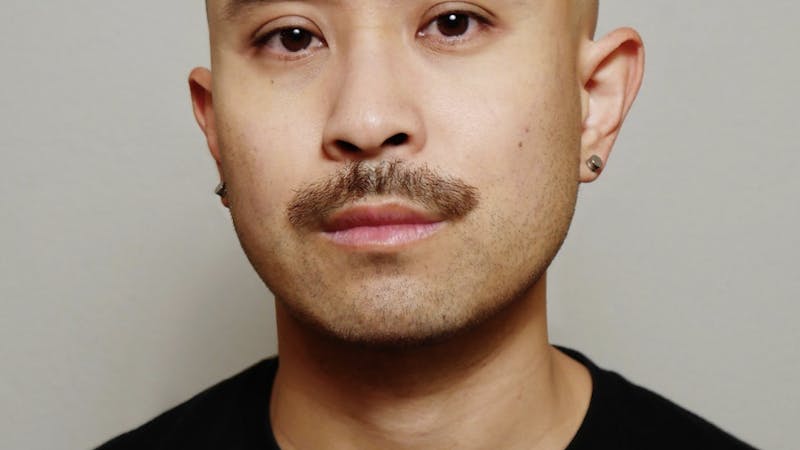Exhibition celebrates beloved professor's art and teaching
Darra Keeton is a professor emeritus of drawing, painting and print-making in the Rice University Department of Visual and Dramatic Arts. Keeton joined the faculty in 1993 as a sabbatical replacement and was eventually granted tenure and awarded Rice's Phi Beta Kappa award for teaching in the mid-90s.
Her current exhibition, In My Nature: 30 Years of Work, and its accompaniment, Second Nature: An Exhibition of Former Students of Darra Keeton, celebrates her career and impact on her students. It ends Thursday, Sept. 5.
What is this gallery exhibition about? What do you hope to portray or accomplish through this exhibition?
You don't often see your work in a gallery setting spanning decades. So this overview is very informative. By including the student show, I highlighted the whole point of this enterprise: the dialogue between teacher and student, which either shapes their own voices as artists or is rejected as they mature into their individual artistic entities. I hope that what I gave them went beyond the classroom, and so I chose these artists for their commitment to their artistic life and for the range of approaches they represent. I think my own work became clearly mine at about the time I arrived at Rice, and the last 20 years here provided an atmosphere of inquiry and support that was necessary for me to clarify it.
How would you define your style and very distinctive technique?
I have two ways of working, two avenues which inform each other. One is discovering a clarity of form, a kind of figure-ground relationship based on the frozen moment of Renaissance painting. I love all the old guys: Giotto, Goya and Titian. But I also am interested in the transformations of nature, such as the ambiguous but powerful processes in the human brain, particularly as it generates emotion. I have been heavily influenced by the abstract expressionists, such as de Kooning, Pollock and Philip Guston. I am distressed I have no women mentioned on this list because I'm a feminist. They're there, but these were the most powerful influences on me as a young painter. I invent my own language by flooding and puddling the paint on the floor without brushes so that the movement of the paint running reveals the image.
I notice that you use colors that are both beautiful and calming, yet striking in their contrast. How do you choose your colors, and what do they mean for you?
I love the niche in painters such as Giorgione, Bellini and Veronese. I learned from them, as well as from Delacroix and Matisse, how important true color harmony is, that you can't just squeeze color out of a tube and have veracity. I also want the color to emanate light, not be flat, dead color blocks.
This exhibition is meant to show the art you've made for the past 30 years. How would you say it has evolved over time?
It's gotten clearer. I've found my subject matter, finally, which is a bit frustrating now that I have Parkinson's [disease] because I have lots of ideas without the strength to complete them. Often, as people age, they regret they didn't have the life they had hoped for. I can say I've had a better life than I expected, although it's definitely been disrupted by traumatic events.
One thing I feared going into teaching was the loss of studio impetus. I found, to my surprise, that teaching actually enhanced my studio activities. My goals became clearer, and I began to offer myself the gentleness and support I gave to my students. When I started, I painted purely from feelings. I tried to find images through intuitive gestural marks, and that's a really tough way to work - not knowing what you're looking for and hoping you'll find it. Over the years, I've discovered I wanted paintings that were emotional, without being self-indulgently mystical, that they were rigorous and powerful in their mystery.
When I was in grad school, painting was declared dead. It was derisively called "hairy stick technology," but I believed painting was full of possibilities, that we could express the deepest human experiences through paint. For the first 10 years, I searched for a way to make this clear but struggled in the studio and made really bad paintings. I put in my 10,000 hours before I got anywhere original. Gradually, the work evolved, reflecting my growing interest in brain mechanics, especially how emotions are processed.
Being diagnosed with Parkinson's must have been a traumatic life shift. How has it impacted your aesthetic as an artist?
It's changed everything. I can't work big anymore, I can't sustain [the work] for long, and I have to have help for everything. I've worked small a lot in the past because of traveling, and in opposition to the belief that only big paintings are serious; they're often overblown and bombastic, and there are a myriad of examples of small, powerful paintings in the history of art. The small also invokes my interest in the microscopic, those things hidden from view.
I've had to shut down my outside studio, and I have a storage locker full of art supplies, etc., that I don't know what to do with. I may have a big bonfire or art yard sale. I've learned to accommodate my loss of motor control, so my paintings have gotten messier, but they've also gotten riskier and more energetic. I don't concentrate on what I can't do; I concentrate on what I can do.
I'm also exploring digital photography,
which I can do by myself with a minimum of cleanup. I'm excited to see where that goes.
What would you like your legacy at Rice or in the world to be?
I hope that my work is the legacy. As to Rice, I have four paintings hanging in the English department and two in the Humanities Building. I hope people respond to my work for as long as it exists in the world, which I hope is long after I'm gone, in museums, private collections and Rice itself. My goal is that people feel a connection to my work without knowing me personally. I also wanted to teach in a more positive and supportive, yet rigorous way than I experienced in grad school, which was very aggressive and didn't work for me. I wanted to be the conduit for the great undergraduate teachers that I did have, as I hope my students will be the conduit for me.
What are your next big projects?
I have a book I've been working on for several years. They say everybody's got one good book in them; I hope to finish mine in the near future. I had a very eventful and colorful life, and I think it makes for a good story if I can tell it right. There's also a documentary film in progress which should be finished by the end of the year, and my catalogue will be finished by next month.
I've also been making silly videos I call "cartoons" with students who come over to visit. They combine my love of music and my urge to have laughter in my life. My last assistant is now in an ashram in New York, so I'm looking for a volunteer to be my co-producer. If anyone at Rice is interested, they can get in touch.
The closing reception for Darra Keeton's show will be held Thursday, Sept. 5 from 5-8 p.m. Come to experience her world of art and, perhaps equally as importantly, to dance.
More from The Rice Thresher

Andrew Thomas Huang puts visuals and identity to song
Houston is welcoming the Grammy-nominated figure behind the music videos of Björk and FKA twigs on June 27.

Live it up this summer with these Houston shows
Staying in Houston this summer and wondering how to make the most of your time? Fortunately, you're in luck, there's no shortage of amazing shows and performances happening around the city. From live music to ballet and everything in between, here are some events coming up this month and next!

Review: 'Adults' couldn’t have matured better
Sitcoms are back, and they’re actually funny. FX’s “Adults” is an original comedy following a friend group navigating New York and what it means to be an “actual adult.” From ever-mounting medical bills to chaotic dinner parties, the group attempts to tackle this new stage of life together, only to be met with varying levels of success.

Please note All comments are eligible for publication by The Rice Thresher.